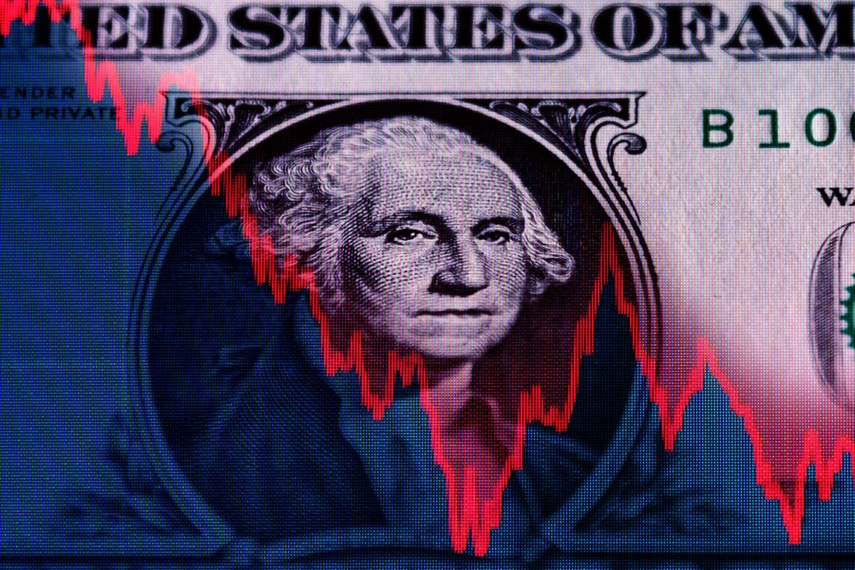 Since the US ditched the gold standard, the petrodollar system has been the bedrock of dollar dominance. One of the most vital mechanisms supporting USD hegemony has been the process of petrodollar recycling. Uncovering this lesser-known system can help investors understand how the petrodollar’s demise would harm their investments and wealth.
Since the US ditched the gold standard, the petrodollar system has been the bedrock of dollar dominance. One of the most vital mechanisms supporting USD hegemony has been the process of petrodollar recycling. Uncovering this lesser-known system can help investors understand how the petrodollar’s demise would harm their investments and wealth.
What is meant by petrodollar recycling?
Petrodollar recycling describes how money earned from oil exports eventually makes its way back into the global economy. More specifically, it focuses on the reinvestment – or recycling – of surplus petrodollars from oil-producing nations (OPEC, Norway, and Russia) across the globe after investing domestically.
A mixture of small populations, underdeveloped economics, and expansive energy reserves leaves these countries with immense spending power. At some point, spending petrodollars within their borders is no longer socially or financially prudent. Petrodollar recycling happens when those excessive petrodollars revert to foreign economies through imports and direct investment in securities, stocks, and other financial vehicles.
The impact of petrodollar recycling.
The phenomenon of petrodollar recycling has global implications which directly benefit the US dollar and, as a result, American investors.
Reinforcing petrodollar system.
Petrodollar recycling creates a positive feedback loop for the petrodollar system wherein oil-producing nations are motivated to uphold the status quo after seeing positive economic returns on their surplus petrodollars. It’s a win-win that has preserved the US dollar as the go-to currency for completing international oil transactions for decades. This status also gives the US influence when setting economic standards.

The Petrodollar: A Retrospective
How To Prepare For The Impending Dollar Failure
Get Report – It’s Free!Selling US securities.
Oil-rich nations tend to park a large portion of their profits in US treasury securities which directly fund the US government. Early on in the petrodollar system, the US brokered a deal with Saudi Arabia to buy US treasuries although the holding of US debt in the Kingdom went unreported for decades. At times, OPEC nations were recycling their petrodollar surpluses into US securities 50% faster than other countries. In 2023, OPEC nations held over 260 billion worth of US debt. Some of the largest holders include:
- Saudi Arabia – $111 billion
- UAE – $64.9 billion
- Kuwait – $43.3 billion
- Iraq – $41.2 billion
Lowering borrowing costs.
The US holds the world’s largest debt at $32 trillion which is largely supported by petrodollar recycling. This level of borrowing is only possible because of the massive pool of USD floating around international markets. The more dollars available, the cheaper it is for the US to borrow. With federal spending breaking new records, this consistent access to cheap debt has been a major boon to US operations domestically and abroad.
Increasing global dollar demand.
For decades, the US dollar has been the preferred currency denomination for international loans. When taking on debt, countries generally see the greenback as the safest bet in terms of stability and liquidity. The hundreds of billions of petrodollar-surpluses-turned-investments reinforce the demand for the dollar. To put this into perspective, around half of world trade is conducted in USD.
Booming investments in US markets.
A lot of the money from the US’ energy investments in oil ends up getting “recycled” back into the domestic economy. The US stock market has consistently offered the highest returns when compared to foreign markets which is why oil-rich nations are more than happy to invest their petrodollar surplus in US companies. For example, the Saudi Public Investment Fund has injected more than $30 billion into the US stock market as of 2023.
Is this the end of petrodollar recycling?
American investors have reaped the benefits of petrodollar recycling ever since the petrodollar system kicked off in the early 1970s. For the first time in 50 years, however, the tide seems to be shifting against the greenback. Saudi Arabia, a once stalwart defender of US interest in the Middle East, is considering accepting Yuan for oil. This existential threat to the petrodollar comes as China ramps up its geopolitical influence in the region as the Biden administration irks its international responsibilities.
This is a self-inflicted wound as the Fed’s feckless fiscal policies have eroded international confidence in the US dollar. An unsettling mix of stubborn inflation, bank collapses, and spiraling debt has driven the process of de-dollarization as countries seek to limit their dependence on the greenback.
If the dollar loses the support of OPEC nations, the entire petrodollar system risks complete collapse. As the primary underpinning of dollar hegemony, a failed petrodollar would pose an existential threat to the dollar’s value. When the US dollar loses value, Americans could see their savings depreciate, spending power decrease, and stock market investments decline.
Stay Informed to Safeguard Your Wealth
You shouldn’t be on the hook for the government’s failed fiscal policies and the ensuing economic repercussions. The petrodollar system is a complex system with a lot of moving parts and significant influence on domestic economics which makes staying informed a crucial part of preserving your wealth.
We’ve created an in-depth Petrodollar Report and De-Dollarization Timeline to help investors remain in the know. They’re updated as major developments occur in the dollar saga. Don’t miss out on these free and informative resources to protect your investments.

